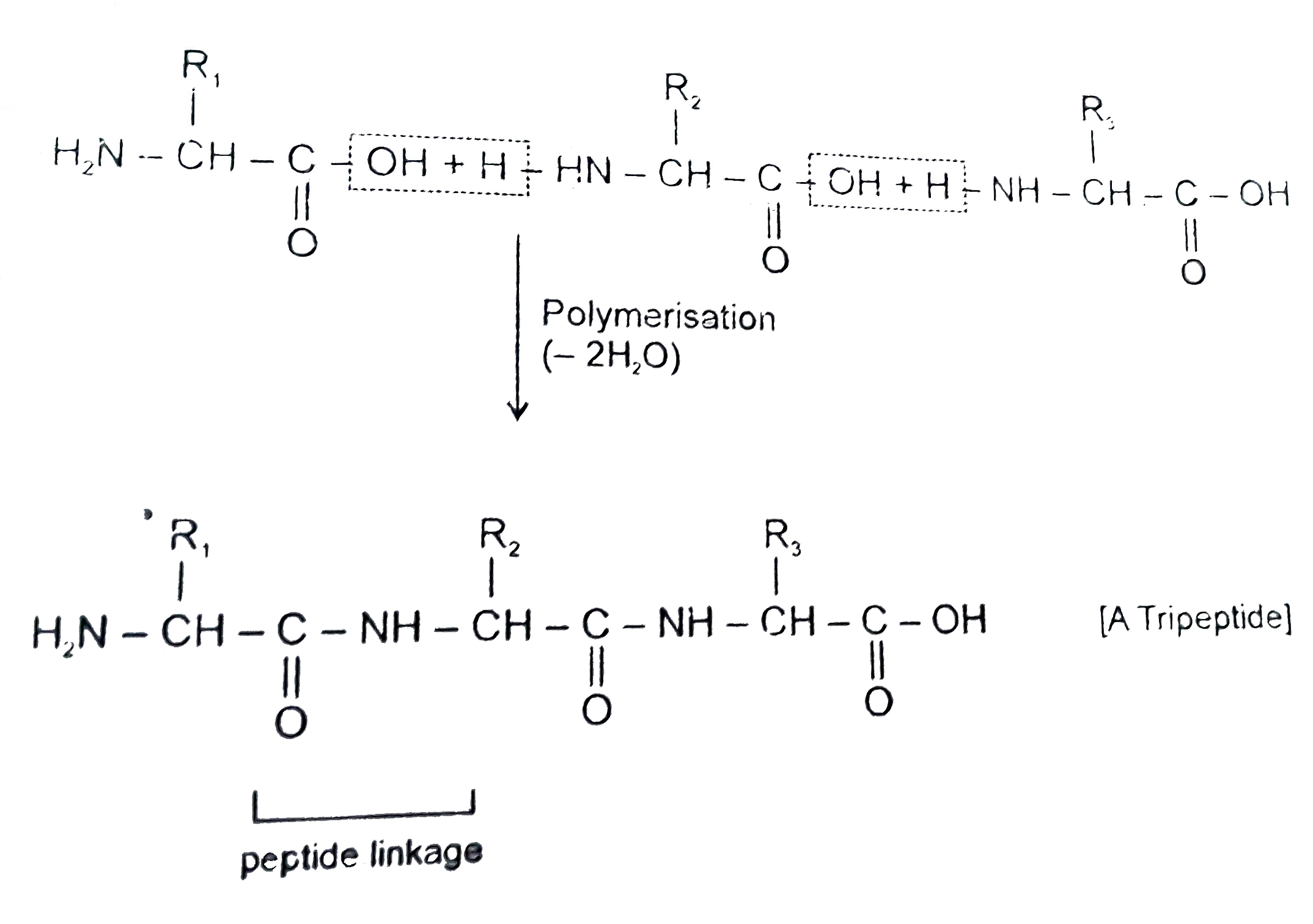An α-amino acid exists as, +NH3−C∣RH−COOH at (pH=2) and its isoelectric point is 6. The amino acid at pH 10.97 will exist as :
+NH3−C∣RH−COO−
NH2−C∣RH−COO−
NH2−C∣RH−COOH
+NH2−−C∣RH−COOH
The correct Answer is:B
To determine the form of the alpha-amino acid at pH 10.97, we need to analyze the behavior of amino acids at different pH levels, particularly in relation to their isoelectric point (pI).
1. Understanding the Structure at pH 2:
At pH 2, the amino acid exists in its cationic form:
NH+3−CH−COOH
This indicates that the amino group is protonated (NH3+) and the carboxylic acid group is still in its acidic form (COOH).
Hint: Remember that at low pH, amino acids tend to gain protons, leading to a positively charged form.
2. Identifying the Isoelectric Point (pI):
The isoelectric point (pI) is given as 6. At this pH, the amino acid exists in a zwitterionic form:
NH+3−CH−COO−
Here, the amino group is still protonated, while the carboxylic acid group has lost a proton and exists as a carboxylate ion (COO^-).
Hint: The zwitterionic form is neutral overall but has both a positive and a negative charge.
3. Analyzing the Form at pH 10.97:
At pH 10.97, which is above the isoelectric point (pI = 6), the amino acid will lose the proton from the amino group:
NH2−CH−COO−
In this form, the amino group is deprotonated (NH2), and the carboxylic group remains deprotonated (COO^-). This indicates that the amino acid is now in its anionic form.
Hint: At high pH, amino acids lose protons from both the amino and carboxylic groups, leading to a negatively charged form.
4. Conclusion:
Therefore, at pH 10.97, the amino acid exists as:
NH2−CH−COO−
This form is characterized by a net negative charge due to the presence of the carboxylate ion.
Final Answer: The amino acid at pH 10.97 will exist as:
NH2−CH−COO−
At pH 2, the amino acid exists in its cationic form:
NH+3−CH−COOH
This indicates that the amino group is protonated (NH3+) and the carboxylic acid group is still in its acidic form (COOH).
The isoelectric point (pI) is given as 6. At this pH, the amino acid exists in a zwitterionic form:
NH+3−CH−COO−
Here, the amino group is still protonated, while the carboxylic acid group has lost a proton and exists as a carboxylate ion (COO^-).
At pH 10.97, which is above the isoelectric point (pI = 6), the amino acid will lose the proton from the amino group:
NH2−CH−COO−
In this form, the amino group is deprotonated (NH2), and the carboxylic group remains deprotonated (COO^-). This indicates that the amino acid is now in its anionic form.
Therefore, at pH 10.97, the amino acid exists as:
NH2−CH−COO−
This form is characterized by a net negative charge due to the presence of the carboxylate ion.
NH2−CH−COO−
Topper's Solved these Questions
- BOOK - NARAYNACHAPTER - BIOMOLECULESEXERCISE - EXERCISE-4 (NCERT EXAMPLAR PROBLEMS)12videos
BIOMOLECULES
- BOOK - NARAYNACHAPTER - BIOMOLECULESEXERCISE - EXERCISE-332videos
BIOMOLECULES
- BOOK - NARAYNACHAPTER - AMINES & DIAZO COMPOUNDSEXERCISE - Subjective type Q.13videos
AMINES & DIAZO COMPOUNDS
- BOOK - NARAYNACHAPTER - CARBOXYLIC ACIDEXERCISE - All Questions288videos
CARBOXYLIC ACID
Similar Questions
The pKa1,pKa2andpKa3 value for the amino acid cysteine ⎛⎜ ⎜⎝HS−CH2−C∣NH2H−COOH⎞⎟ ⎟⎠ are respectively 1.8, 8.3, 10.8. What is isoelectric point of cysteine amino acid ?
View SolutionThe pka values for the three ionizable groups x, y & z of glutamic acid are 4.3, 9.7 & 2.2 respectively
HOOC(x)−CH2−CH∣+NH3(y)−COOH(z)
The isoelectric point for the amino acid is :View Solution
Knowledge Check
- Question 1 - Select One
The isoelectric (or isoionic) point is the pH where the amino acid is
Apositively charged.Bnegatively charged.Cneutral.Dcan't say. - Question 2 - Select One
The given structure of α - amino acid will exist at which pH ?
⊕NH3−COOH∣C∣R−HA7B14C6D12 - Question 3 - Select One
Isoelectric point of an amino acid is the pH at which the amino acid molecules
Amigrate to the anodeBmigrate to the cathodeCwould not migrate either to the anode or to the cathode and exist as neutral dipolar ionsDmove alternatively to the anode and the cathode
The given structure of α−amino acid will exist at which pH?
oveset(⊕)NH3−COOH∣C∣R−HView SolutionProteins are biomolecules composed of α− amino acids. An α−amino acid has a general formula R−C∣NH2−COOH. The amino acids polymerise and form an amide linkage (peptide linkage) between two monomeric amino acid units. The polymerisation takes place as follows
H2N−R1∣CH−C∣∣O−OH+H−HN−R2∣CH−C∣∣O⏐⏐ ⏐↓Polymerisation(−2H2O)−OH+H−NH−R3∣CH−C∣∣O−OH

Two or more similar amino acids can also polymerise, for example a dimer will be like.
H2N−R∣∣CH−C∣∣O−NH−R∣∣CH−C∣∣O−OH.
Which statement is incorrect about the given trimer.View SolutionH2N−H∣C∣R−COOH is feneral formula of amino acid. Here R stands is
View SolutionIn an amino acid, the carboxyl group ionises at pKa1=2.34 and ammonium ion at pKa2=9.60 . The isoelectric point of the amino acid is at pH
View SolutionH2N−H∣C∣R−COOH is general formula of amino acid. Here R stand for
View Solution

